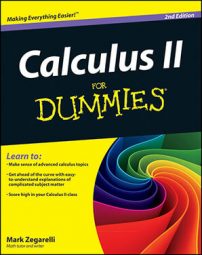When mathematicians discuss whether a function is integrable, they aren’t talking about the difficulty of computing that integral — or even whether a method has been discovered. Each year, mathematicians find new ways to integrate classes of functions. However, this fact doesn’t mean that previously nonintegrable functions are now integrable.
Similarly, a function’s integrability also doesn’t hinge on whether its integral can be easily represented as another function, without resorting to infinite series.
In fact, when mathematicians say that a function is integrable, they mean only that the integral is well defined — that is, that the integral makes mathematical sense.
In practical terms, integrability hinges on continuity: If a function is continuous on a given interval, it’s integrable on that interval. Additionally, if a function has only a finite number of some kinds of discontinuities on an interval, it’s also integrable on that interval.
Many functions — such as those with discontinuities, sharp turns, and vertical slopes — are nondifferentiable. Discontinuous functions are also nondifferentiable. However, functions with sharp turns and vertical slopes are integrable.
For example, the function y = |x| contains a sharp point at x = 0, so the function is nondifferentiable at this point. However, the same function is integrable for all values of x. This is just one of infinitely many examples of a function that’s integrable but not differentiable in the entire set of real numbers.
So, surprisingly, the set of differentiable functions is actually a subset of the set of integrable functions. In practice, however, computing the integral of most functions is more difficult than computing the derivative.

